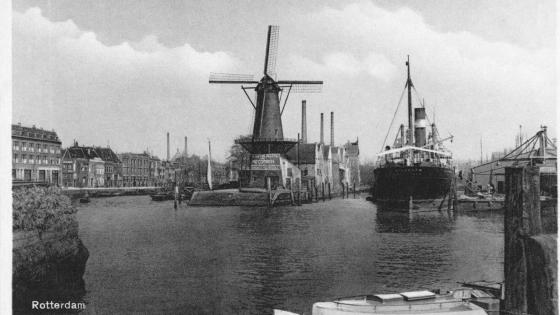Despite the global crisis, countries have by and large upheld their pledge not to increase protectionism. Despite this, some protectionism seems to be creeping in – mainly in the form of antidumping measures (Bown 2010, Evenett 2009). In many circles, antidumping is still brushed aside as a relatively innocuous instrument of trade protection since, supposedly, it only negatively impacts the trade flows of the protected products which on average represent less than 1% of imports.
New evidence on antidumping’s “chilling” impact
But our recent work (Vandenbussche and Zanardi 2010) shows that antidumping protection goes beyond this direct effect. It negatively affects aggregate imports. For example, both India and Mexico saw their aggregate annual imports decrease by around 7% because of their antidumping measures.
The recent proliferation of antidumping laws across mainly developing countries introduced a structural break in the trade policy regimes of these “new adopters”. This structural break allows us to identify trade flows before and after the adoption of antidumping laws and to estimate the effect on aggregate trade. This unique policy change across a wide set of countries makes it possible to go beyond previous studies and to look for effects that exceed product-level trade flows. Without controlling for antidumping law adoption, the effects of antidumping measures are likely to be an underestimate of the true effects since trade flows may be “chilled” throughout. Thus, studying the impact of antidumping measures on trade flows towards countries that long had and used antidumping laws, such as the EU or US, can never capture their true trade chilling effects. While one may observe a drop in product-level trade before and after the introduction of a particular antidumping measure, this can never capture the deterring effect that these measures may have on other products.
Based on a sample of 41 countries that adopted an antidumping law after 1980, results show that heavy new users of antidumping, such as Brazil, India, and Mexico, experienced a substantial reduction of their aggregate annual import volumes due to the use of antidumping. However, aggregate imports are affected only for those users that have established themselves as frequent users of antidumping. The extent of the actual enforcement of the law appears to be crucial.
While it is true that entry into the WTO and the subsequent trade liberalisation substantially increased trade volumes for countries such as India, at the same time the use of antidumping measures has seriously dampened trade flows. Table 1 summarises the results arising from a gravity model with bilateral aggregate trade flows. In column (1) we list the year in which trade liberalisation began and in column (4) we report the increase in imports due to that liberalisation. A country like India experienced an annual growth in its imports of around 17% as a result of trade liberalisation in the early 90s. But at the same time, column (3) shows the percentage of imports “lost” as a result of antidumping measures, which for India is around 7% and which seriously dampens trade. The comparison of these two percentages illustrates the true chilling effects of antidumping. The effects of antidumping are too large to be dismissed as a “small price to pay” for further trade liberalisation. The same holds for Brazil, Mexico, Turkey and Taiwan, which are all frequent users of antidumping measures.
Table 1. Chilled trade as a result of antidumping measures
|
|
First year
of trade liberalisation
(1)
|
Year of first AD measure
(2)
|
%D in annual
imports due to AD
(3)
|
%D in annual imports due to liberalisation
(4)
|
|
|
|
|
|
|
|
Brazil
|
1988
|
1989
|
-5.9%
(2.65)
|
34.6%
(9.94)
|
|
India
|
1991
|
1993
|
-6.8%
(3.05)
|
17.4%
(4.70)
|
|
Mexico
|
1985
|
1987
|
-7.2%
(3.21)
|
28.2%
(7.91)
|
|
Taiwan
|
1986
|
1986
|
-2.3%
(1.07)
|
4.9%
(1.26)
|
|
Turkey
|
1980
|
1990
|
-5.3%
(2.40)
|
52.7%
(16.07)
|
|
|
|
|
|
|
Notes: Robust standard errors in parenthesis calculated using the delta method.
Source: Vandenbussche and Zanardi (forthcoming).
Explanations for aggregate trade chilling
These new results identify trade effects of antidumping protection that go beyond the first-order effects of the very specific products targeted. These trade chilling effects may result from “spillover” effects. Trade protection may have externalities that spread to other imported products from the same targeted countries and to products from other importing countries. The import demand of substitute products may also be affected. The result that antidumping protection chills aggregate trade flows is an indication that product-level protection has implications for many more products than just the protected ones. In addition to affecting substitute products, antidumping may also affect more “downstream” products using the protected one as an input.
Moreover, antidumping laws and their use can have a deterring effect on trade partners, making them more cautious when shipping their goods to countries that appear to be frequent and tough users of antidumping. The threat of antidumping duties can cause significant strategic effects. These are likely to result in higher prices and lower volumes since trade partners “learn” how to avoid dumping complaints.
Earlier literature has also shown that antidumping protection can result in the formation of international cartels and tacit collusion. This anticompetitive nature of antidumping laws is also likely to result in chilled trade. Another well known trade effect arising from antidumping is the effect on inward foreign direct investment (FDI). Exporters may decide to “jump” antidumping measures by setting up a production plant within the protected market which may result in less trade. It has also been argued that in many cases, political and strategic considerations (in addition to economic motives) explain the use of antidumping laws. If the proliferation of antidumping laws as we have seen it in the last two decades results in a Nash equilibrium in which every country is using antidumping, global imports are likely to be reduced.
Although our analysis does not distinguish which channels are mostly responsible for the overall chilling effect (a research question worth pursuing), it does show that they are uneven across sectors. Sector level trade in chemicals and agriculture (two sectors often targeted by antidumping measures) suffer most from the unintended implications of trade policy.
Conclusion
The results presented here refute the notion that antidumping laws are merely a “small price to pay”. They clearly indicate that the trade chilling effects of antidumping on bilateral trade flows are non-negligible. Based on our estimations, we infer that on average, the new tough users of antidumping laws such as Brazil, India, Mexico, Taiwan, and Turkey have 5.9% fewer annual imports as a result of their antidumping measures.
These conclusions are worrisome given the continuing proliferation of antidumping regimes among developing countries whose efforts of substantial tariff reductions risk to be neutralised by antidumping actions. The possibility that the list of active antidumping users expands is very likely. The use of antidumping policy in response to the global financial crisis could seriously chill aggregate worldwide trade flows, which is likely to aggravate, rather than remedy, the crisis.
In this respect, these new results casts a new light on the effects of antidumping and shows that it is less innocuous than its advocates would like us to believe. This makes it all the more relevant for developed countries and developing countries to engage in a multilateral reform of the antidumping system.
References
Bown, Chad P (2010), “Antidumping, safeguards, and protectionism during the crisis: Two new insights from 4th quarter 2009”, VoxEU.org, 18 February.
Evenett, Simon (2009), “The unrelenting pressure of protectionism: Global Trade Alert's third report”, VoxEU.org, 14 December.
Vandenbussche, Hylke and Maurizio Zanardi (2010), “The Chilling Trade Effects of Antidumping Proliferation”, European Economic Review, forthcoming.


